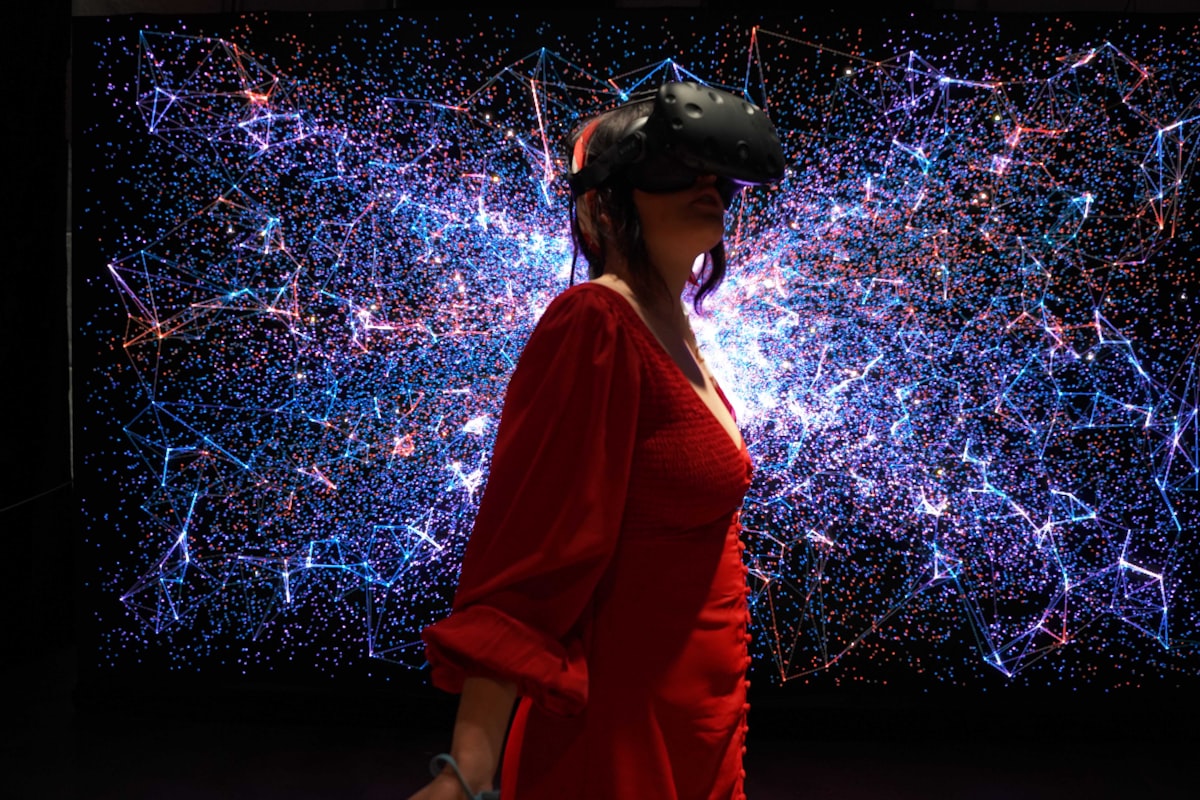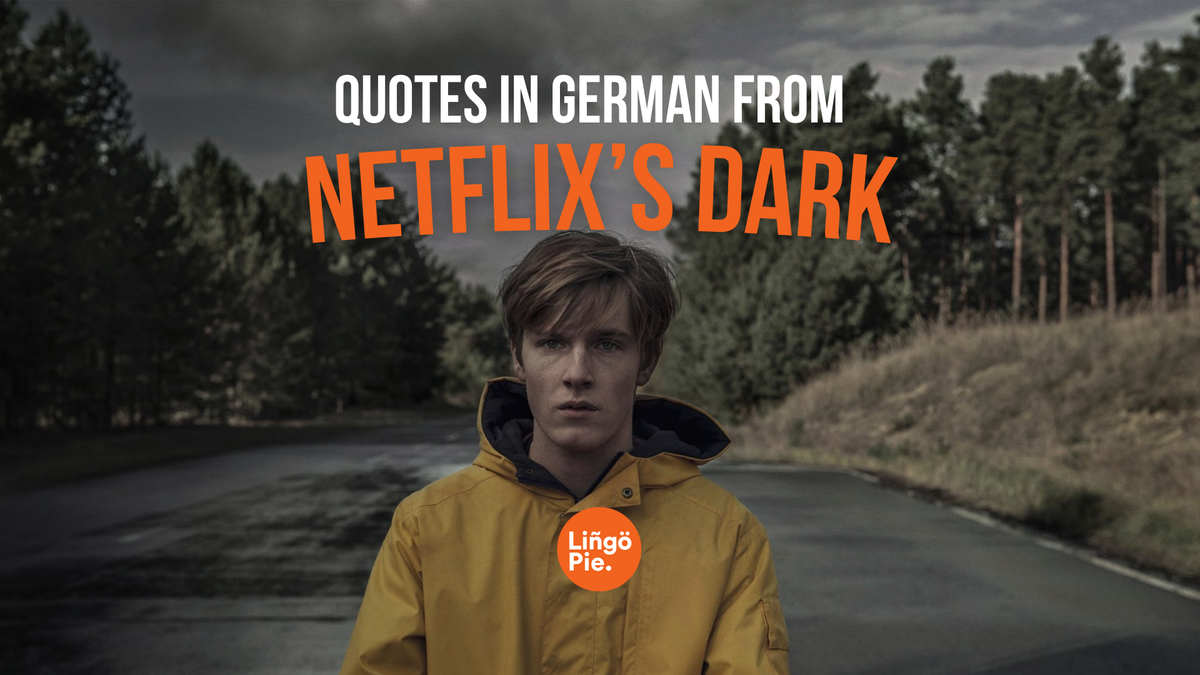Today, we’re going to talk about learning new languages in the most advanced way. This is a guide to learning language skills with virtual reality!
We will discuss virtual reality language-learning resources, such as Mondly VR and ImmerseMe, and explain how they can improve your language-learning experience.
We'll also explore how to get the most out of VR. This technology is particularly great for speaking practice.
Supplement your learning with Lingopie, the streaming platform that offers great TV shows and movies in 8 popular foreign languages: French, Spanish, Italian, German, Portuguese, Russian, Korean, and Japanese. This will develop your listening and reading skills.

Virtual Reality and the Metaverse
Virtual reality is essentially a computer-generated simulation of an alternate reality that you can interact with. The metaverse, or the world of virtual reality (VR), is a place where anything is possible.
With this technology, you can immerse yourself in a virtual world and chat with virtual characters in realistic scenarios. Enter this new world with a VR headset, such as the Samsung GearVR or Oculus Quest, and lose yourself in an incredibly life-like new world.
There are many useful applications of VR, including playing an immersive video game or doing a virtual reality tour of a property that has not been built yet! But you can also use this technology to learn a new language.
Using VR to Learn a Language
There are some language learning apps these days that employ VR technology to optimize learning potential and make learning fun. These apps include Mondly VR and ImmerseMe.
Mondly VR
Mondly offers VR lessons in a whopping 30 languages! Some of the most popular languages on the app are English, Spanish, German, French, Italian, Portuguese, Russian, Dutch, Japanese, and Chinese.
With this learning tool, you can immerse yourself in realistic scenarios and practice your foreign language communication skills. The real-life scenarios include being in the back of a taxi, sitting opposite a native speaker of your target language on a train, or ordering in a restaurant.
With the Mondly VR app, you can order food in a Spanish restaurant, speak with a Chinese businessman on a train or ask a French taxi driver for change. The speech recognition tool will provide instant feedback on your pronunciation.
The site also offers an augmented reality (AR) app for language learning. You can use your phone as a lens to explore a new world within your own.
ImmerseMe
The ImmerseMe app offers language lessons within a virtual immersive environment in French, German, Spanish, Italian, English, Japanese, Chinese, Indonesian, and Greek.
This immersive experience focuses on pronunciation, dictation, translation, and immersion. You can choose from over 3000 interactive scenarios and tailor the lessons to a curriculum plan.
With this advanced tool, you (or your students) can practice speaking German, Greek, or any of the available 9 languages in seemingly real-life situations. This teaches young people how to become global citizens in this diverse and modern world.
Much like Mondly VR, ImmerseMe gives you access to restaurants, shops, public transport, and other real-life scenarios in different languages from the comfort of your home or school.
Use these apps to practice vocabulary, speak with virtual natives, explore new languages and improve fluency, pronunciation, and confidence.
Which Language Learners Benefit from VR Learning?
Generally, the VR language-learning process is great for children and young adult learners who love to incorporate technology into their daily lives. Anyone who does not shy away from advanced technology can benefit from this innovative learning method.
The VR experience will also suit active and visual learners who like to interact with learning materials and associate words with images. As you speak with virtual characters, you will be in a virtual setting that is linked to the words you are using.
For instance, you can speak to a waiter about the menu while surrounded by a virtual restaurant. This means you will create image associations with the food-themed vocab.
Moreover, VR language learning is focused heavily on listening and speaking skills, as much of the learning content is in the form of VR conversations. So, learners who want to hone these skills can stand to benefit a lot from VR language learning.
Best Methods for Language Learners Using VR
The language-learning experience can be heightened by communicating with native speakers of your target language. If you do not have access to real-life native speakers, you can connect with virtual people instead!
When it comes to diving head-first into Mondly VR or ImmerseMe, it helps to remember that the virtual people you speak with are not real. This means you can practice new languages totally unabashed and let yourself make mistakes, try complex phrases and be bold.
With speech recognition, you can receive instant feedback on your pronunciation, so do not be afraid to try, as making mistakes and learning from them is the best way to progress.
Many language learners can benefit from thinking of their VR language-learning experience as a game, rather than a formal lesson. This allows you to relax into the experience and have fun, rather than worrying about being perfect.
Other Great Language-Learning Tools Online
As well as virtual reality apps, there are other great sites and resources for learning foreign languages. These include Lingopie's streaming service and Lingopie Music, language exchange sites, like iTalki, and online forums.
If you use a range of different resources for learning languages, you will find that you have a deeper and more fulfilling learning journey. Make sure to hone all four key skills: speaking, listening, reading, and writing.
Watching TV shows and movies and listening to music in different languages are great ways to expose yourself to the vernacular in a fun and engaging way. This kind of quality exposure is essential for developing your vocabulary and picking up colloquialisms.
Moreover, cinema and music offer an interesting insight into other cultures. Of course, getting a language exchange partner will do this too, and with a native-speaking partner, you can also get feedback straight away on your accent and word choice.
There are also audiobooks, podcasts, radio stations, and YouTube videos in foreign languages that you can engage with online, particularly as your listening comprehension develops and you move to an intermediate level of learning.
Finally, there is always social media. There are a lot of great Instagram accounts and TikTok profiles that are dedicated to teaching languages in an accessible and entertaining way.
Related: The 16 Best Accounts to Learn a Language with Instagram
Watching short videos online is a great way to avoid getting overwhelmed by new information and you can learn on the go with social media, as it is accessible anywhere you can get your phone out for five minutes.
FAQs: Learning Languages with Virtual Reality
Can you learn languages in VR?
Not only can you learn foreign languages in a VR space, but you can have fun while doing so! This immersive experience is designed to be more exciting than taking classes and studying textbooks and also provides more natural and authentic exposure to new languages.
How does virtual reality language learning work?
The science of learning foreign languages with virtual reality is still evolving and getting better every day. And yes, it absolutely works!
The key to this method is immersion in seemingly real-life situations in which you need to use different languages to navigate. You can practice your vocabulary and try out new words in a safe virtual world where there is no judgment.
Can VR be used for education?
Yes, VR can be used for education. Mondly VR can benefit students all over the world, as it gives them access to real-life situations in parts of the world they may not otherwise be able to visit.
This means they can practice using new Japanese words in, for example, a sushi restaurant in Tokyo while sitting in school in Paris.
What is the fastest proven way to learn a language?
Immersing yourself in a language is by far the fastest way to learn. You can do this with VR, of course, or else by visiting a country in which your target language is spoken.
You can also use a language-learning app, read books, listen to music and podcasts, watch movies and engage with social media posts in your language of choice to supplement your learning. The more resources you use the better.

Summing Up: How to Learn Languages with Virtual Reality
Now you know how to learn new languages in the most advanced way. Enter into a virtual world and hold practice conversations in a range of different scenarios.
The VR space allows you to practice navigating everyday useful conversations in realistic settings. Tech-savvy, active and visual learners will thrive with their VR headsets.
Remember to mix up your learning resources to ensure all of your language skills (reading, writing, listening, and speaking) are developing together.From virtual reality language learning apps, such as Mondly VR, to Lingopie and other useful sites, technology has never been more well-equipped to help you achieve fluency in a second language.






![5 Official Spanish Language Tests To Show Your Proficiency Level [Guide]](/blog/content/images/size/w300/2025/06/Spanish-Language-Tests.jpg)
![Why Memorizing Spanish Words Won’t Make You Fluent [Tips]](/blog/content/images/size/w300/2025/06/how-to-practice-spanish-vocabulary.jpg)
![How to Improve Your Polish Conversation Skills [5 Best Tips]](/blog/content/images/size/w300/2025/06/improve-polish-conversation-skills.jpg)
